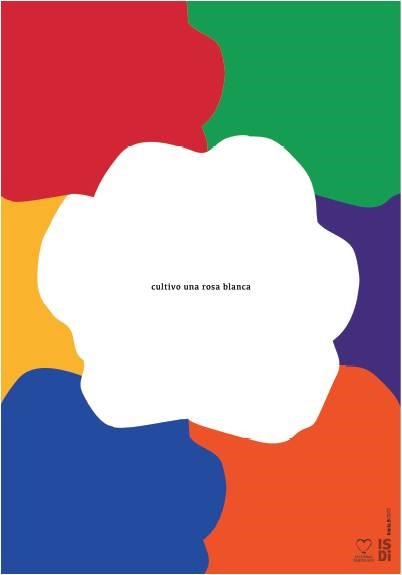The beauty of every day
##plugins.themes.bootstrap3.article.main##
Abstract
En todas partes Soy is a poster project of the José Martí Chair of the Higher Institute of Design that was founded in 2011. Its social impact encompasses the transformation of the members themselves and extends from the University to other institutions and territories including international events. A look at José Martí from the Design and specifically from the poster, shows in depth the work and poetry of the Apostle.
The Project has shown that it is possible to design based on poetic expression, not only for aesthetic reasons, but also because it is essential for human communication, as well as responding to graphic problems and different solutions with high emotional recurrence and metaphorical treatment of the picture.
Nothing is more like poetry than design because in the same way that poetry organizes language, design organizes concepts, images. Whenever the designer has tried to simplify the understanding of the message, he has been using poetic resources, of all kinds of play with that image. Clearing the boundaries between design and poetry is the maxim of the project En todas partes Soy. The assessment of both disciplines must be given for their specific function and especially for their technical - aesthetic level and their usefulness in close relation to the conditions indicated.
##plugins.themes.bootstrap3.article.details##

This work is licensed under a Creative Commons Attribution-NonCommercial-ShareAlike 4.0 International License.
- Attribution — You must give appropriate credit , provide a link to the license, and indicate if changes were made . You may do so in any reasonable manner, but not in any way that suggests the licensor endorses you or your use.
- NonCommercial — You may not use the material for commercial purposes .
- No additional restrictions — You may not apply legal terms or technological measures that legally restrict others from doing anything the license permits.
- ShareAlike — If you remix, transform, or build upon the material, you must distribute your contribution under the same license as the original. NOTE: This point applies to numbers 1 to 20 of the magazine with the previous CC-BY-NC-SA 4.0 license. Does not apply to the new CC BY-NC 4.0 license from Volume 11, Number. 21 (2024).
References
• Azcuy M. E. Historia del Cartel Martiano en Cuba. Inédito.
• Batlle J. S. (2004). Aforismos José Martí. La Habana: Centro de Estudios Martianos.
• Dacal M. (1991). Diseño y Poesía, Trabajo de diploma, ISDi.
• de Juan A. (2006). Abriendo Ventanas, Textos Críticos. La Habana: Editorial Letras Cubanas.
• de Quesada y Miranda, G. (2004). Martí, hombre. La Habana: Ediciones Boloña. Publicaciones de la Oficina del Historiador de la Ciudad.
• Galarraga R. (2004). Diccionario del Pensamiento Martiano. La Habana: Editorial Ciencias Sociales.
• García F. (2003). El amor como energía revolucionaria en José Martí. La Habana: Centro de Estudios Martianos.
• López Flor de Liz. (2008). Aproximación a la producción joven de carteles en Cuba a partir de los 90. Diálogo entre el diseño de comunicación visual y la sociedad cubana. Tesis de Maestría, ISDi.
• Mañach, Jorge. Martí. El Apóstol. (2001). La Habana: Editorial Ciencias Sociales.
• Martí J. Antología Mínima. Tomo I y II. (1975). La Habana: Selección y notas de Pedro Álvarez Tabío. Editorial de Ciencias Sociales.
• Muñiz M. Mi profesión a debate. (2011). La Habana: Ediciones Forma. Oficina Nacional de diseño.
• Valdés Galarraga, Ramiro. Diccionario del Pensamiento Martiano. Editorial Ciencias Sociales, La Habana, 2004.
• Vega S., García A. y Sotolongo C. (2011). Ciudadano cartel. La Habana: Ediciones ICAIC.
• Vitier, C. (1997). Martí en la Universidad IV. Selección y prólogo. La Habana: Editorial Félix Varela.
• Villaverde H. (2013). Testimonios del Diseño Gráfico cubano. La Habana: Ediciones La Memoria. Centro Cultural Pablo de la Torriente Brau.






















